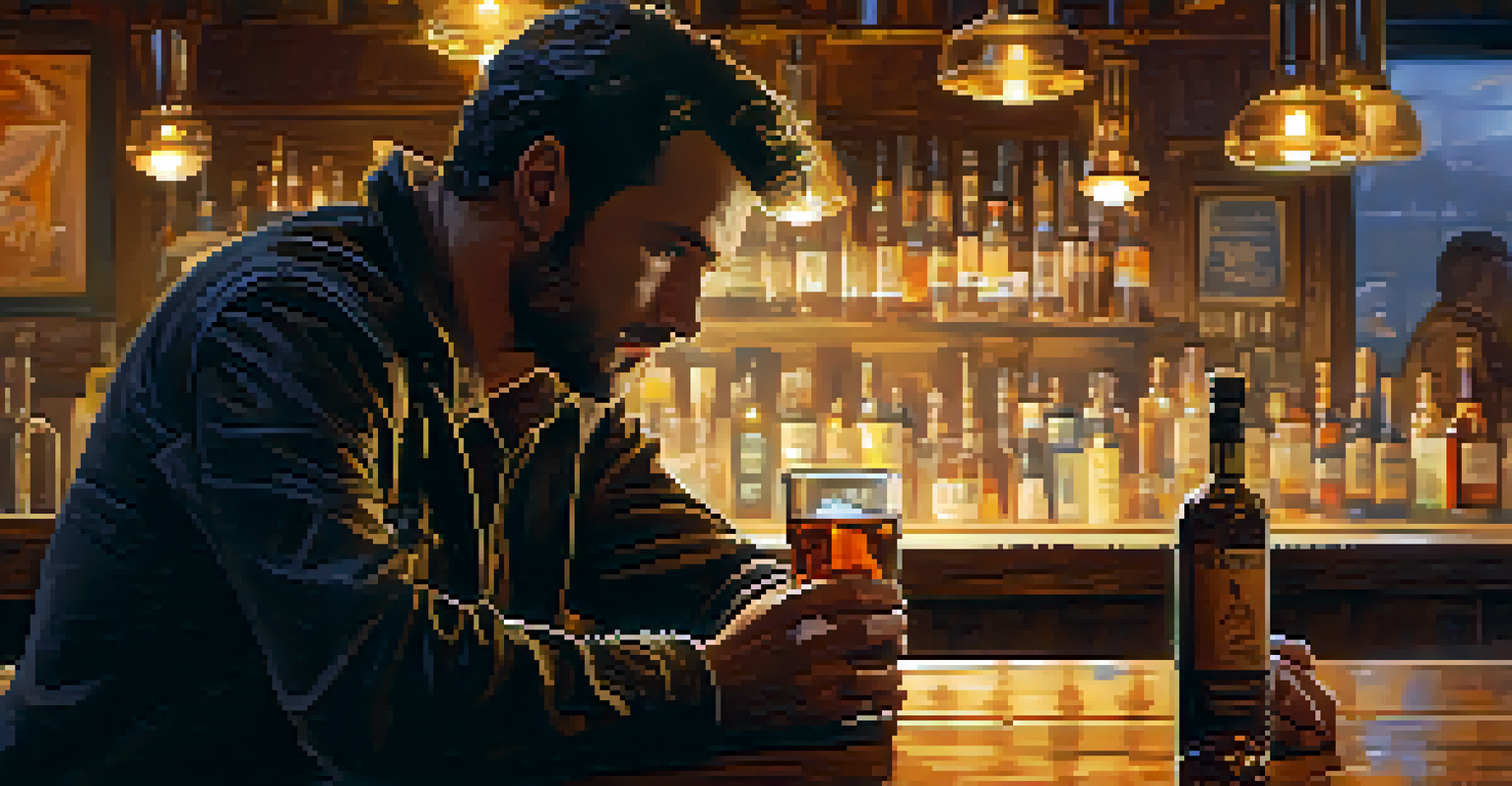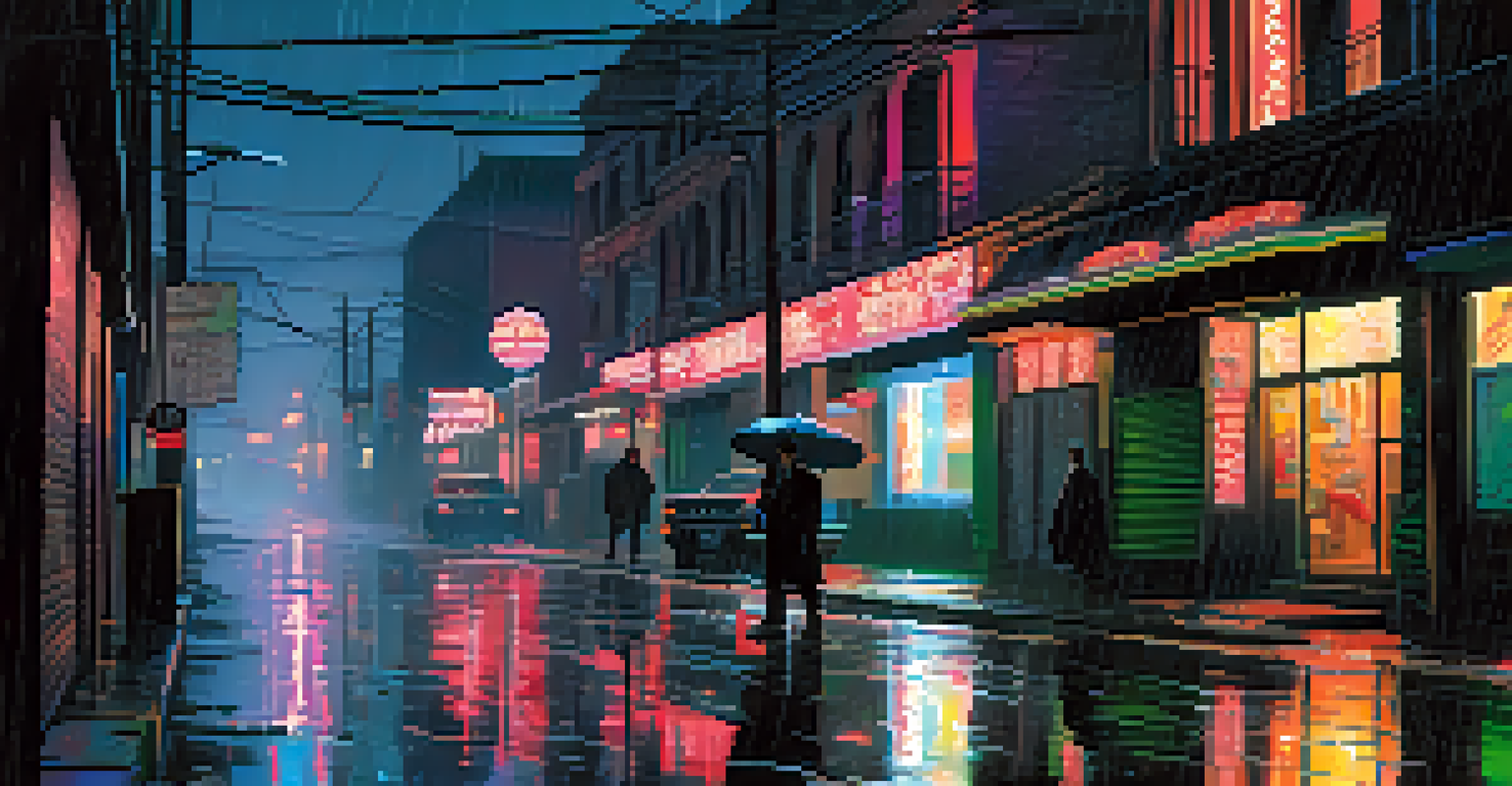The Antihero's Journey: From Villain to Protagonist

Understanding the Antihero: A New Kind of Hero
In recent years, the concept of the antihero has gained significant traction in literature and film. Unlike traditional heroes, antiheroes often possess morally ambiguous traits that make them relatable yet flawed. This complexity allows audiences to connect with them on deeper emotional levels, as they reflect the multifaceted nature of humanity.
The antihero is a character that embodies the complexity of the human experience, revealing that we are all flawed yet striving for something greater.
Think of characters like Walter White from 'Breaking Bad' or Tony Stark from 'Iron Man.' They embody both admirable qualities and serious flaws, which creates a fascinating dynamic. Their journeys often blur the lines between good and evil, inviting viewers to question their own moral compasses.
This shift toward antiheroes represents a broader cultural trend, where society increasingly values authenticity over perfection. As we navigate a world filled with gray areas, these characters resonate with our own struggles, making their journeys all the more compelling.
The Evolution of the Antihero in Storytelling
Historically, protagonists were typically portrayed as noble and virtuous, embodying the ideals of heroism. However, as storytelling evolved, so did the archetypes within it. The rise of antiheroes can be traced back to literary movements that started emphasizing character depth and moral complexity.

In works like F. Scott Fitzgerald's 'The Great Gatsby,' the protagonist is deeply flawed yet charismatic, challenging the notion of a straightforward hero. This literary shift paved the way for characters who could be both relatable and intriguing, setting the stage for modern antiheroes.
Antiheroes Redefine Modern Heroism
Antiheroes challenge traditional notions of heroism by embodying moral ambiguity and personal struggles that resonate with contemporary audiences.
Today, we see antiheroes in various media, from novels to television series, reflecting a broader acceptance of complexity in character development. This evolution not only enriches storytelling but also mirrors the complexities of real life, where people often navigate moral dilemmas.
Key Traits of a Compelling Antihero
What makes an antihero truly captivating? Several key traits stand out, such as moral ambiguity, personal struggle, and a unique worldview. These characteristics allow antiheroes to resonate with audiences, as they often face internal conflicts that mirror our own experiences.
Antiheroes allow us to explore the gray areas of morality, challenging our perceptions of right and wrong.
For instance, an antihero might grapple with their past mistakes while striving for redemption. This journey is relatable; after all, who hasn't faced challenges that made them question their choices? This relatability adds a layer of depth, inviting viewers to root for them despite their flaws.
Moreover, antiheroes often possess a distinct voice or perspective that sets them apart from traditional heroes. This individuality makes their stories not just about good versus evil, but rather about self-discovery and transformation, which captivates audiences even more.
The Antihero's Struggle: Conflict and Redemption
Central to the antihero's journey is the theme of conflict, both external and internal. Antiheroes often find themselves at odds with societal norms or authority figures, leading to thrilling narratives filled with tension. These conflicts serve as catalysts for their growth, forcing them to confront their own demons.
Take the character of Jaime Lannister from 'Game of Thrones.' Initially seen as a villain, his complex backstory reveals the struggles and motivations that shape his actions. This exploration of internal conflict adds layers to his character, making his eventual quest for redemption all the more impactful.
Cultural Reflection Through Antiheroes
These characters serve as a lens to explore societal issues, reflecting our complexities and the quest for authenticity in a rapidly changing world.
Redemption arcs in antihero stories often highlight the possibility of change, reminding us that it's never too late to seek a better path. This resonates with audiences, as it reflects the hope that we can learn from our mistakes and evolve into better versions of ourselves.
Cultural Impact: Why We Love Antiheroes
The fascination with antiheroes extends beyond mere entertainment; it taps into cultural narratives and societal values. As we confront issues like injustice, corruption, and moral ambiguity in the real world, antiheroes provide a lens through which we can explore these themes. They challenge us to think critically about right and wrong.
Moreover, antiheroes often reflect the struggles of modern society, where individuals face complex choices in a rapidly changing world. Their journeys resonate with our desire for authenticity and understanding, making them relatable figures in a time when perfection feels unattainable.
This cultural impact is evident in the popularity of antihero-driven stories across various platforms. From graphic novels to blockbuster films, audiences are drawn to these characters, illustrating a collective yearning for narratives that reflect our own complexities and challenges.
Antiheroes in Media: Notable Examples to Explore
There’s no shortage of engaging antiheroes in contemporary media. Characters like Dexter Morgan from 'Dexter' and Elizabeth Salander from 'The Girl with the Dragon Tattoo' showcase the diverse ways antiheroes can captivate audiences. Each character embodies unique traits that challenge traditional notions of heroism, making their stories all the more intriguing.
Films like 'Joker' further delve into the psyche of an antihero, exploring themes of mental health and societal neglect. This character study not only entertains but also prompts essential conversations about the factors that shape individuals into antiheroes.
The Future of Antihero Narratives
As storytelling evolves, antiheroes are expected to become even more prominent, fostering engaging discussions about morality and the human experience.
By examining these notable examples, we can appreciate how antiheroes offer fresh perspectives on morality and human nature. They encourage us to reflect on our own lives and the choices we make, ultimately enriching the storytelling landscape.
The Future of Antiheroes: Trends and Predictions
As storytelling continues to evolve, the role of antiheroes is likely to grow even more prominent. With audiences increasingly favoring complexity over simplicity, we can expect to see more narratives that challenge conventional definitions of heroism. This trend reflects a broader societal shift towards embracing imperfections and real-life struggles.
The rise of streaming platforms has also opened doors for more experimental storytelling, allowing creators to explore antihero narratives in innovative ways. This evolution will likely lead to fresh takes on familiar archetypes, creating even more diverse and engaging characters.

Ultimately, the future of antiheroes promises to stimulate thought-provoking discussions about morality, identity, and the human experience. As these characters continue to captivate audiences, they will undoubtedly shape the landscape of storytelling for years to come.